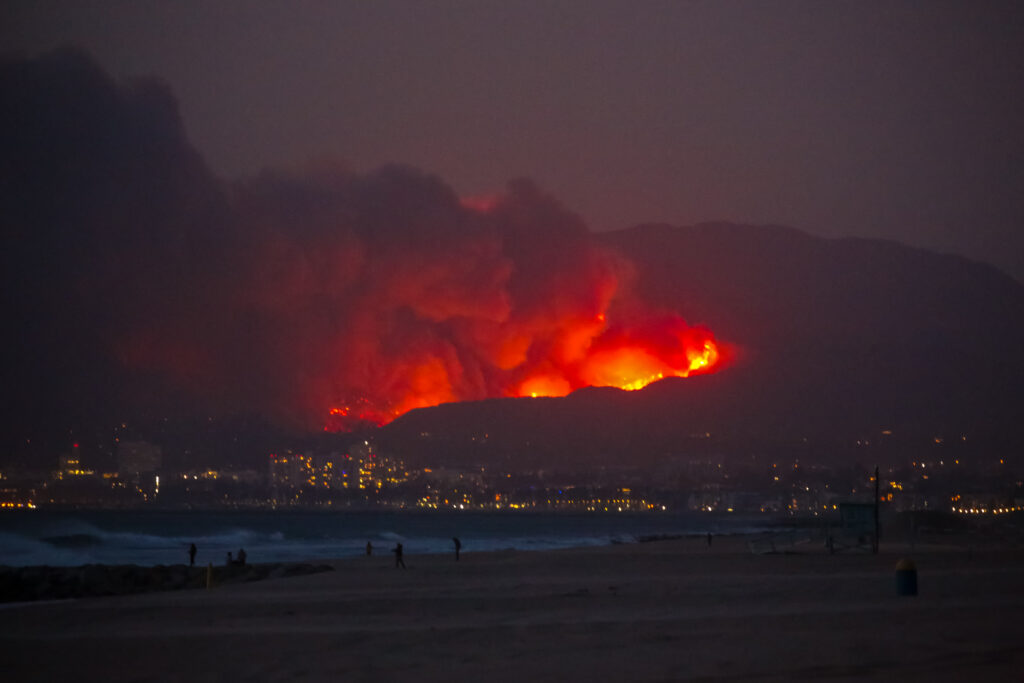Southern California In Flames As Wildfires Ravage Los Angeles County
The most destructive wildfire in LA’s history continues to burn.
Southern California is burning. Two monstrous wildfires — the Palisades Fire and the Eaton Fire — are raging through Los Angeles County, fuelled by bone-dry conditions and Santa Ana winds clocking in at 100 mph.
The Palisades Fire has already earned the grim title of the worst fire in Los Angeles history. Over 15,000 acres have gone up in smoke, taking 1,000 structures with them. Evacuation orders have displaced 100,000 residents, with another 100,000 waiting on edge. To the north, the Eaton Fire has claimed five lives, burned through 10,000 acres, and flattened another 1,000 structures.
The official containment level? A hard zero.

“This is a devastating loss for all of Los Angeles,” City Council member Traci Park told CNN. Governor Gavin Newsom has declared a state of emergency while firefighters, armed with reinforcements from neighbouring states, battle to keep the flames at bay. But the winds are unyielding, spreading the flames faster than crews can respond. President Biden has approved federal aid, but for now, it’s residents versus nature.
Meanwhile, the smoke has wrapped itself around Southern California like a heavy blanket, choking the air for over 17 million people. Malibu, Topanga, and other waves in the area are veiled in smog; their lineups eerily empty.
It might seem like a weird time for wildfires in Southern California — winter usually means less risk — but these fires are proving otherwise. Experts say it’s a perfect storm of dry conditions, relentless Santa Ana winds, and a long-running drought that’s turned the landscape into a tinderbox.
A study by University of Colorado fire scientist Jennifer Balch revealed that the speed of the fastest-growing fires — such as the ones currently raging — has more than doubled since 2001, resulting in far greater destruction than the slower, larger Autumn blazes. Winter fires are especially perilous as they tend to burn both hotter and quicker, according to Jon Keeley, a fire scientist with the U.S. Geological Survey.
Throw in climate change, and it’s no surprise these fires aren’t waiting for the summer. The shift in weather patterns — heavy rain followed by dry heat — has allowed vegetation to flourish, only to dry out and become perfect fuel for flames.
The timing may be wrong, but the conditions are all too familiar — California has been living in the shadow of past flames for decades. As the fires rage across the state, it feels like the same nightmare replaying, with increasing intensity. Record-breaking seasons have become the norm, and the damage stretches far beyond just the scorched earth.
Our thoughts are with everyone in California right now as they face another brutal round of wildfires.














Comments
Comments are a Stab Premium feature. Gotta join to talk shop.
Already a member? Sign In
Want to join? Sign Up